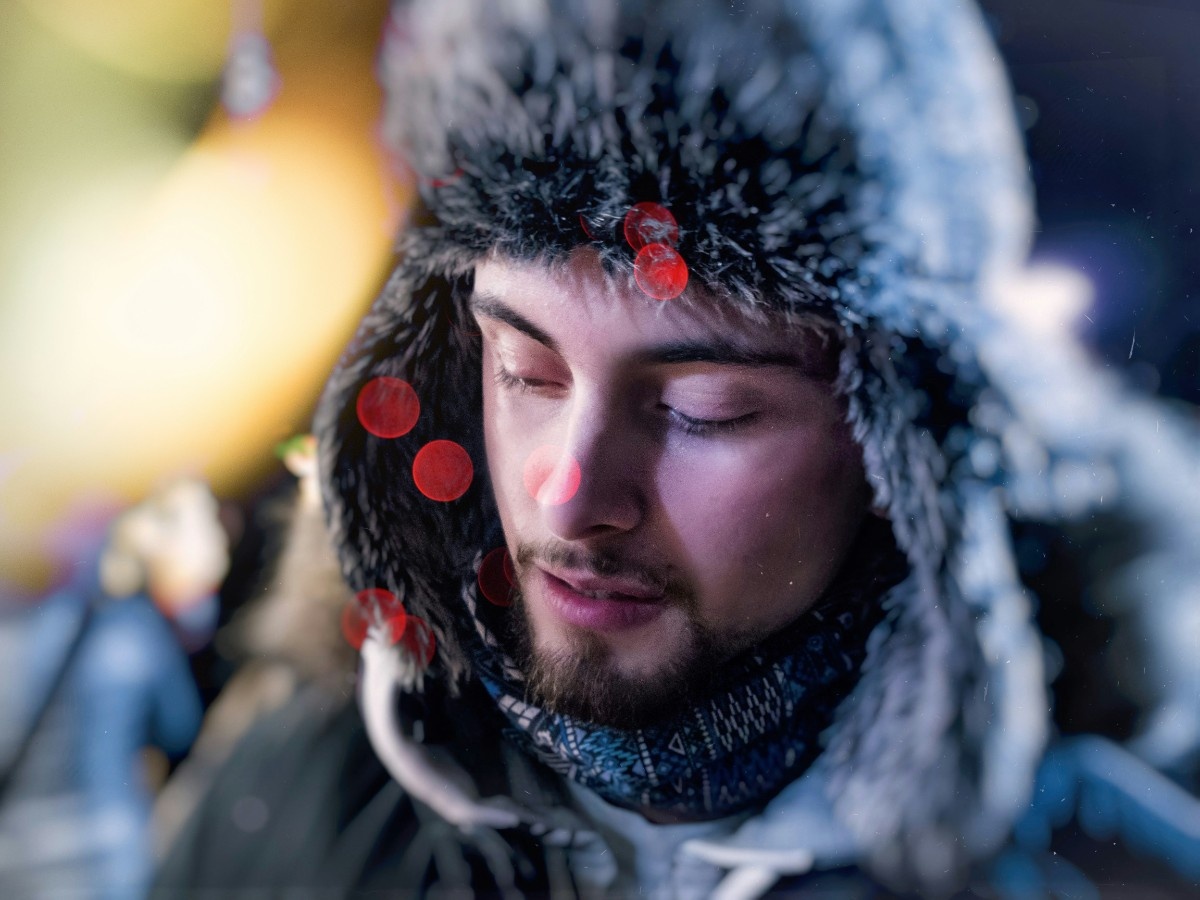Essential Winter Hat Styles and Their Practical Applications
Traditional Beanie Evolution
The classic beanie represents the foundation of men’s winter hats, evolving significantly from its humble origins. Modern men’s beanie designs incorporate sophisticated construction techniques that maximise warmth retention whilst maintaining a streamlined aesthetic. Manufacturers like The North Face have revolutionised this basic style by introducing double-layer construction methods that create additional insulating air pockets without adding bulk. These innovations particularly benefit users in urban environments where style must balance with functionality.
Contemporary beanie designs often feature graduated thickness zones, with additional material around the ears and crown where heat loss typically occurs most rapidly. This targeted approach to insulation represents a significant advancement in winter hats for men, allowing for better temperature regulation during varying activity levels. Some designs incorporate elastic fibres strategically placed to prevent the hat from riding up during movement, a common issue with traditional beanie styles.
Premium manufacturers have begun incorporating technical features into seemingly simple beanie designs. These enhancements include moisture-wicking bands around the forehead, reflective elements for safety in low-light conditions, and antimicrobial treatments to extend wear time between washes. These adaptations make the modern beanie significantly more versatile than its predecessors, suitable for everything from casual wear to technical outdoor activities.
Technical Winter Caps
The evolution of men's winter caps and hats has led to increasingly specialised designs for specific activities. Rab and similar technical brands have developed winter caps that specifically address the needs of outdoor enthusiasts. These designs often feature wind-resistant panels on the front and ears whilst maintaining breathability through mesh panels or perforated zones elsewhere.
Technical winter caps frequently incorporate features like integrated ear protection that can be deployed or stowed as needed, making them particularly versatile for changing conditions. This adaptability proves especially valuable in activities where temperature regulation becomes crucial, such as winter running or hiking. Many designs also include moisture management systems that actively work to move perspiration away from the skin, preventing the uncomfortable and potentially dangerous accumulation of moisture during high-intensity activities.
The incorporation of advanced closure systems represents another significant development in technical winter caps. These systems allow for precise fit adjustments, crucial for activities where stability is essential. Some manufacturers have begun incorporating compatible systems for attaching neck gaiters or face protection, creating a more comprehensive cold-weather solution.
Cold Weather Specialists
When addressing extreme conditions, men’s winter hats with ear flaps represent a crucial category in cold-weather protection. Brands like Fjallraven have developed sophisticated versions of these traditional designs, incorporating modern materials and construction techniques whilst maintaining the proven effectiveness of the basic concept. These hats typically feature additional insulation around crucial areas and often include adjustable elements to ensure a secure fit in challenging conditions.
The modern trapper hat, a variation of the ear-flap design, has evolved to incorporate technical materials whilst maintaining its characteristic style. These hats often feature water-resistant outer layers combined with high-loft insulation, making them particularly effective in harsh winter conditions. Manufacturers have refined these designs to include features like removable fur or fleece linings, allowing for customisation based on conditions and activity levels.
Advanced closure systems in these specialist hats often include magnetic fasteners or quick-release buckles, allowing for easy adjustment even when wearing gloves. This practicality extends to the integration of ventilation systems that can be operated without removing the hat, crucial for maintaining comfort during varying activity levels in cold conditions.
Material Science and Thermal Performance
Natural Fibre Innovation
The development of natural fibres for winter men’s hats continues to advance, with merino wool leading the innovation. Premium manufacturers like Patagonia have refined the processing of natural materials to enhance their inherent benefits whilst minimising traditional drawbacks. Modern merino wool treatments allow for machine washability without compromising the fibre's natural temperature-regulating properties.
Advanced processing techniques have enabled the creation of ultra-fine wool fibres that eliminate the itchiness traditionally associated with wool headwear. These refined fibres maintain excellent insulating properties while providing enhanced comfort against the skin. Some manufacturers have developed proprietary treatments that improve the water-resistance of natural fibres without impacting their breathability.
The integration of different wool grades within a single hat represents another significant advancement. This technique allows manufacturers to place softer, finer fibres against the skin while using more durable varieties in high-wear areas. This strategic approach maximises both comfort and longevity in men’s hats winter wear.
Synthetic Material Developments
The evolution of synthetic materials has revolutionised hat for winter men design. Companies like Sealskinz specialise in developing advanced synthetic fibres that offer exceptional performance characteristics. These materials often combine multiple functions, such as moisture-wicking and thermal regulation, within a single fibre structure.
Modern synthetic materials frequently incorporate hollow-fibre technology, which provides excellent insulation while maintaining minimal weight. These advanced fibres often feature modified cross-sections that enhance moisture movement and improve thermal efficiency. Some manufacturers have developed proprietary synthetic materials that actively respond to temperature changes, providing dynamic insulation levels based on conditions.
The development of recycled synthetic materials represents another significant advancement in sustainable men winter hats production. These materials maintain high performance standards while reducing environmental impact, often achieving thermal properties that match or exceed their virgin material counterparts.
Weather Protection and Specialised Features
Advanced Weather Resistance
Modern men’s winter hats incorporate sophisticated weather protection technologies that extend well beyond basic insulation. Premium manufacturers like The North Face have developed proprietary water-resistant treatments that maintain breathability whilst providing excellent protection against precipitation. These treatments often integrate with the base material at a molecular level, ensuring longevity and consistent performance throughout the hat's lifespan.
Contemporary weather protection in winter hats for men often features multiple layers working in concert. The outer layer typically repels water and snow, while internal layers manage any moisture that penetrates the initial barrier. This systematic approach to weather protection proves particularly effective in varying conditions, where traditional single-layer protection might prove insufficient. Some manufacturers have developed reversible designs that offer different levels of weather protection based on conditions.
Advanced manufacturing techniques have enabled the integration of windproof membranes without compromising the hat's flexibility or comfort. These membranes, strategically placed in high-exposure areas, significantly enhance the hat's performance in windy conditions. The development of micro-perforated weather barriers represents another significant advancement, allowing for improved breathability while maintaining protection against external moisture.
Technical Integration Features
The evolution of men’s winter hat design has led to increasingly sophisticated technical integrations. Manufacturers like Rab have developed systems for incorporating essential technology without compromising the hat's primary protective functions. These innovations include specially designed channels for routing headphone cables and secured pockets for small electronic devices.
Contemporary technical features often extend to safety considerations, particularly crucial for winter sports enthusiasts. Reflective elements integrated into the hat's construction enhance visibility in low-light conditions without impacting its aesthetic appeal. Some manufacturers have developed systems for attaching additional safety equipment, such as helmet-compatible mounting points or integrated light attachment points.
The integration of smart textiles represents an emerging trend in winter men’s hats development. These advanced materials can actively respond to environmental conditions, adjusting their insulating properties accordingly. Some manufacturers have begun incorporating conductive fibres that enable touch-screen compatibility without removing the hat, a particularly valuable feature in cold conditions.
Activity-Specific Adaptations
Men's winter caps and hats designed for specific activities incorporate features tailored to particular use cases. Brands like Fjallraven have developed specialised designs that address the unique requirements of different winter activities. These adaptations often include adjustable ventilation systems that can be modified during activity to maintain optimal temperature regulation.
Activity-specific features frequently extend to moisture management systems tailored to particular usage patterns. High-intensity activities require different moisture handling capabilities compared to casual use, and manufacturers have developed varying solutions to address these distinct needs. Some designs incorporate zones of different materials or construction techniques to optimise performance for specific activities.
The development of convertible designs represents another significant advancement in activity-specific headwear. These versatile men’s winter hats with ear flaps can be quickly modified to suit changing conditions or activity levels, making them particularly valuable for extended outdoor excursions.
Selecting the Right Winter Hat for Specific Activities
Urban and Professional Use
Selecting appropriate men’s winter hats for urban environments requires careful consideration of both functionality and aesthetics. Professional settings demand headwear that maintains a polished appearance while providing necessary weather protection. Brands like The North Face have developed sophisticated urban collections that balance these requirements, offering refined designs that incorporate advanced thermal properties without compromising professional appearance.
Contemporary urban winter hats for men often feature subtle technical elements that enhance functionality without drawing attention to their protective capabilities. These designs frequently incorporate moisture-wicking properties and wind resistance while maintaining clean lines and professional aesthetics. The development of hybrid designs that transition seamlessly between formal and casual settings represents a significant advancement in urban winter headwear.
The integration of smart features in urban winter hats has evolved to address specific metropolitan needs. Manufacturers have developed designs that accommodate headphones and other daily-use technology whilst maintaining a professional appearance. Some urban-focused men’s winter hat designs incorporate removable elements that allow for customisation based on weather conditions and professional requirements, providing versatility without sacrificing style.
Athletic Performance Requirements
Athletic activities in cold conditions demand specialised features from winter men’s hats. Premium manufacturers like Rab have developed technical designs specifically engineered for high-intensity winter activities. These hats incorporate advanced moisture management systems and targeted ventilation zones to maintain optimal temperature regulation during exercise.
Performance-focused winter headwear often features compression-fit designs that ensure stability during vigorous movement. These athletic men’s beanie styles typically incorporate elastic materials strategically placed to prevent shifting while maintaining comfort. The development of activity-specific zones within the hat's construction allows for enhanced breathability in high-heat areas while maintaining warmth where needed.
The integration of safety features proves particularly crucial in athletic winter headwear. Manufacturers have developed systems incorporating reflective elements and high-visibility materials that maintain effectiveness in low-light conditions without impacting performance. Some designs include specific features for attaching additional safety equipment or integrating with other protective gear.
Extreme Weather Protection
Harsh winter conditions necessitate comprehensive protection from men’s winter hats with ear flaps. Brands like Fjallraven specialise in developing headwear designed for extreme weather conditions, incorporating multiple protective layers and adjustable features to combat severe elements. These designs often include additional insulation around crucial areas and adjustable elements for customising protection based on conditions.
Technical features for extreme weather protection frequently extend beyond basic insulation. Manufacturers like Sealskinz have developed sophisticated systems that combine waterproof membranes with high-performance insulation, creating headwear capable of withstanding severe winter conditions. These advanced designs often incorporate emergency features such as integrated neck protection and face coverage options.
The development of modular systems represents another significant advancement in extreme weather protection. These systems allow users to adjust protection levels by adding or removing components based on conditions. Some manufacturers have developed interconnected systems that enable their hat for winter men to integrate seamlessly with other protective gear, creating comprehensive weather protection solutions.
Winter Sports Specialisation
Winter sports participants require specifically engineered men's winter caps and hats that address unique activity requirements. Manufacturers like Patagonia have developed specialised collections that cater to different winter sports, each incorporating features optimised for specific activities. These designs often include helmet-compatible options and moisture management systems tailored to particular usage patterns.
The evolution of winter sports headwear has led to increasingly specialised designs for different activities. Skiing and snowboarding demands differ significantly from ice climbing or winter hiking, leading manufacturers to develop activity-specific features and construction methods. Some designs incorporate removable elements that allow for customisation based on activity intensity and weather conditions.
The integration of technical features in winter sports headwear extends to safety considerations specific to each activity. Manufacturers have developed systems that enhance visibility in varying conditions while maintaining compatibility with essential protective equipment. Some men winter hats designs include specific features for attaching goggles or other activity-specific gear, ensuring comprehensive protection during winter sports participation.
Related Articles

Let us know you agree to cookies
We use marketing, analytical and functional cookies as well as similar technologies to give you the best experience. Third parties, including social media platforms, often place tracking cookies on our site to show you personalised adverts outside of our website.
We store your cookie preferences for two years and you can edit your preferences via ‘manage cookies’ or through the cookie policy at the bottom of every page. For more information, please see our cookie policy.







